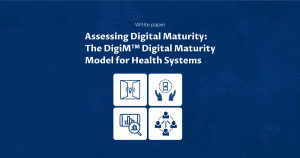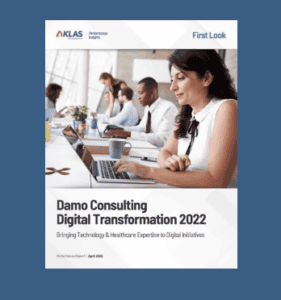White paper
Revolutionizing Healthcare Access
A Customer Relationship Management Approach to Enhancing Clinical Access Centers
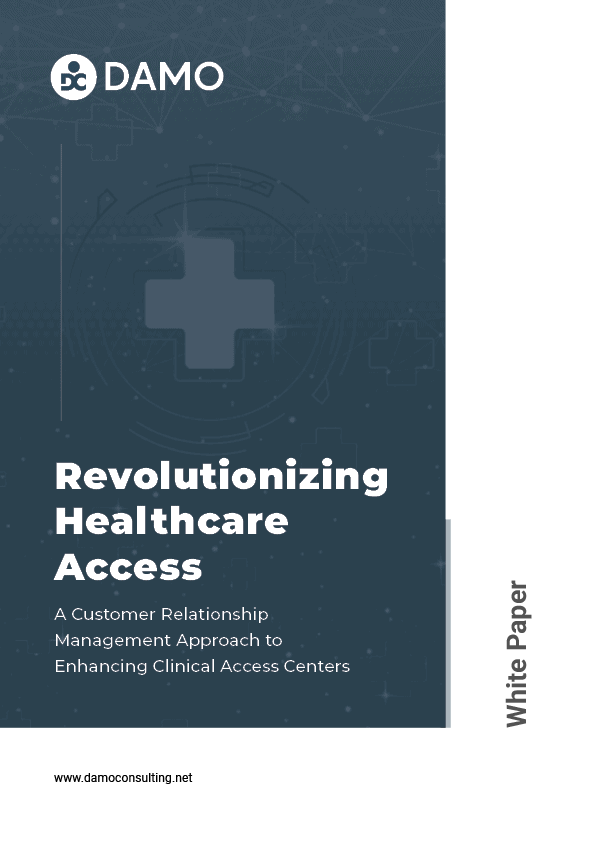
Introduction
A CRM has always been used to schedule appointments, send reminders for upcoming visits and engaging patients by sending birthday greetings, upcoming insurance premiums, signing up for Medicare and Medicaid when eligible; these are essentially managing the administrative goals of the health systems.
Recently, health systems have also started sending wellness reminders for making lifestyle changes, scheduling appointments for preventive health checkups to manage care gaps, sending medication reminders and prescription refills, thereby introducing clinical areas of care. There is a considerable change in the approach to outreach from being merely reactive and providing “sick care” services to offering more proactive campaigns and touchpoints.
Patient expectations have also changed considerably in the last decade. Healthcare organizations are increasingly adopting a CRM solution to bring technology to patient contact center agents, enabling a more personalized, efficient experience.
To achieve this, the agents must have access to the correct data to serve the customer in one call and with short wait times. The new goal is to address and resolve patients’ needs and concerns within one interaction.
Customer retention is important for the growth and sustainability of the business. View CRM as an efficient patient engagement strategy to retain existing customers and attract new ones. CRM can also extend other services or products to customers.
In the healthcare environment, providers are challenged to retain existing customers, acquire potential customers for healthcare services, and extend new services in the future. With the growing competition among healthcare providers, managing customer relationships and providing better services through CRM is a strategy that must be thoroughly planned.
This white paper explores how CRM can enhance patient engagement and boost patient flow for care management, preventive care, and wellness initiatives in clinical settings.
The benefit of a CRM strategy for contact center transformation
An overall “business-driven, IT-enabled” CRM strategy and roadmap to improve patient experience and increase interaction is essential to success and managing costs. In Damo’s experience, most healthcare organizations tend to make large investments in CRM but struggle to realize business value or demonstrate a positive ROI soon enough to justify its continued use in the long term. A good CRM strategy and long-term roadmap help organizations define their exact goals for the initial use cases, such as contact center transformation, that are most likely to provide early benefits and ROI.
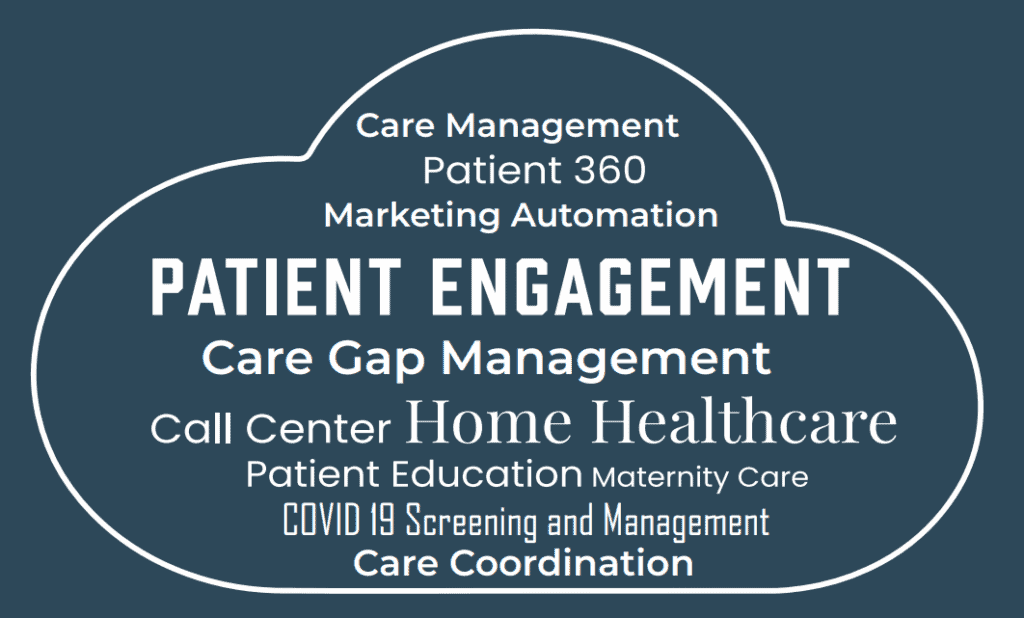
CRM in the clinical settings
Access centers act as an entry point to health systems and are critically important in improving patient outcomes and expanding revenue and margins. Aside from care quality, access to convenient care is one of the top drivers for patient care site decisions. Patients want to access their healthcare when and where they want and need it. Successfully enabling this access for patients could be a key differentiator for health systems to stay competitive and improve profitability.
Consumers still prefer to receive care from trusted local organizations and providers, but these relationships are becoming increasingly tenuous. The lure or promise of a better experience is strong. Any time and resources an organization spends developing an enterprise CRM strategy, identifying gaps, finding opportunities, and prioritizing short-term and long-term efforts are wise investments. They will help preserve their place as the top choice for care in their communities.
CRM must be thoughtfully applied; it cannot be just another uncoordinated technology. Careful planning for integrating Electronic Health Records (EHR) and other applications will reduce the burden on agents and staff and allow contact centers to drive patient engagement significantly.
When dealing with illness, individuals are often perplexed with a multitude of questions, such as:
- My reports show a mildly elevated WBC count.
- Do I need to consult a physician, or will it resolve on its own?
- Is this a matter of urgency that requires immediate attention at the Emergency Department or Urgent Care, or can it be discussed at my next Primary Care Physician (PCP) or wellness visit?
- Which specialty would be ideal for addressing my symptoms?
- What are the alternatives to the care plan that I have been advised?
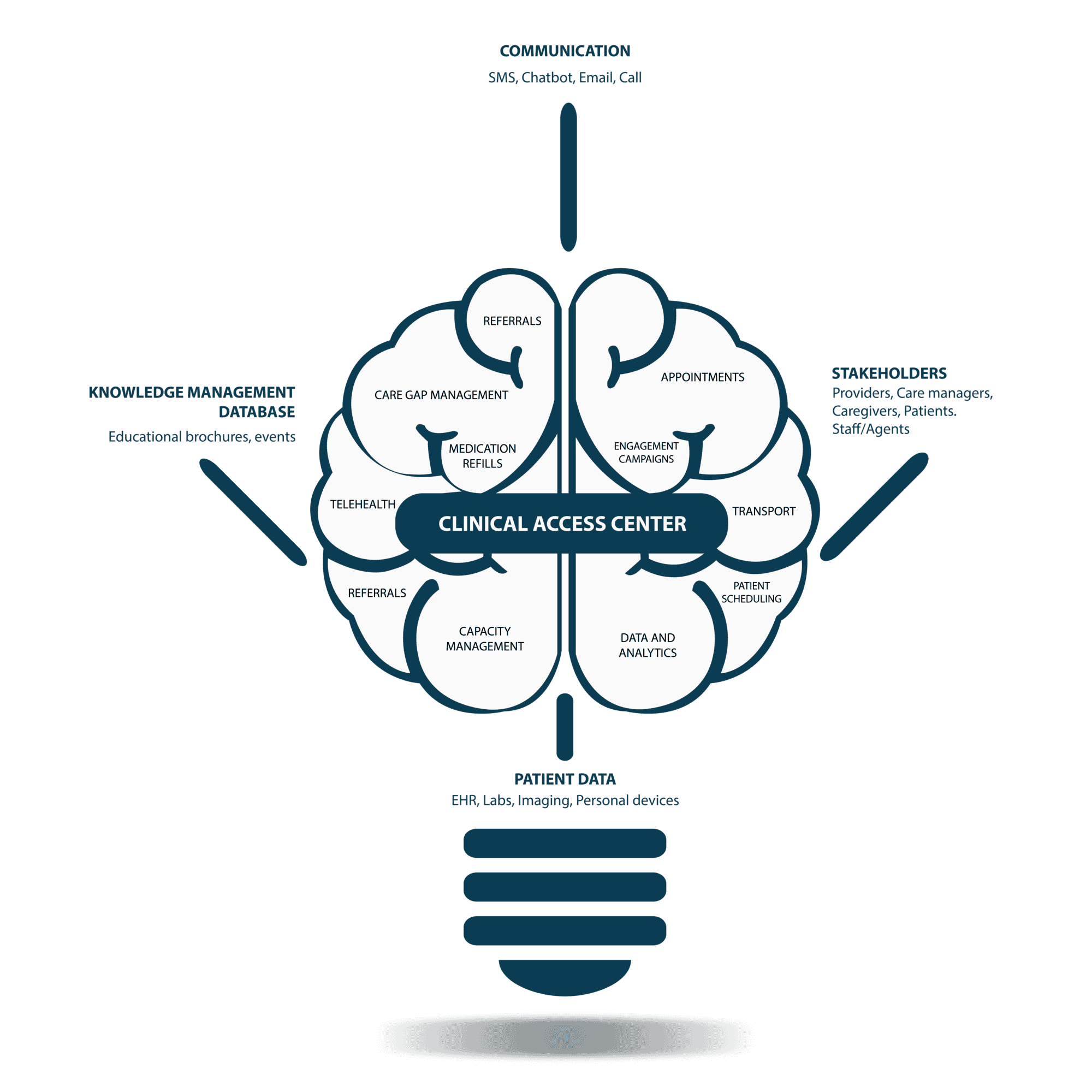
These questions are frequently asked at patient access centers, but the center personnel may not possess the expertise to respond effectively. A nurse triage center can be an essential element of a clinical access center and can guide patients toward the appropriate level of care they require. The patient experience can be considerably improved when they receive guidance from a registered nurse or similar role who can guide them through the next steps of their care journey.
Across the ecosystem, hospitals, health systems, and plans have implemented a variety of applications and platforms to function as CRM. Some have defaulted to the capabilities available within their EHR, while many have turned to Salesforce as a solution. A few have entered a two-platform system with the challenges and benefits inherent in that decision. Giving agents a “single pane of glass” and avoiding the need for them to “swivel chair” between screens and applications is highly desirable. This is a feature and result of well-designed integrations.
A carefully planned CRM environment will enable the clinical access center to drive foundational activities such as provider relationship management, consumer and patient engagement, ambulatory care coordination, transitions in care, and specialty care coordination.
In the clinical setting, “next best action” describes a recommended additional proactive conversation with a patient while you have them on the phone. Examples include scheduling preventive services like mammograms or colon screening, signing up for the patient portal, and capturing social determinants of health (SDOH) data. Some of these may have been set up as campaigns, so using a “next best action” approach increases the success rate for those campaigns.

Measuring success and business return on investment
Ultimately, success will depend on the results. Measuring contact center metrics and KPIs is the key to ensuring that the program provides value and quickly addresses any performance issues caused by either the technologies deployed or inadequate training.
Tracking and measuring call center KPIs is critical. First, the organization should establish clear goals and document baseline data and reporting. Then KPIs should be compared to internal historical metrics and industry standards on an ongoing basis.
Table 1: Standard Clinical Access Center KPIs
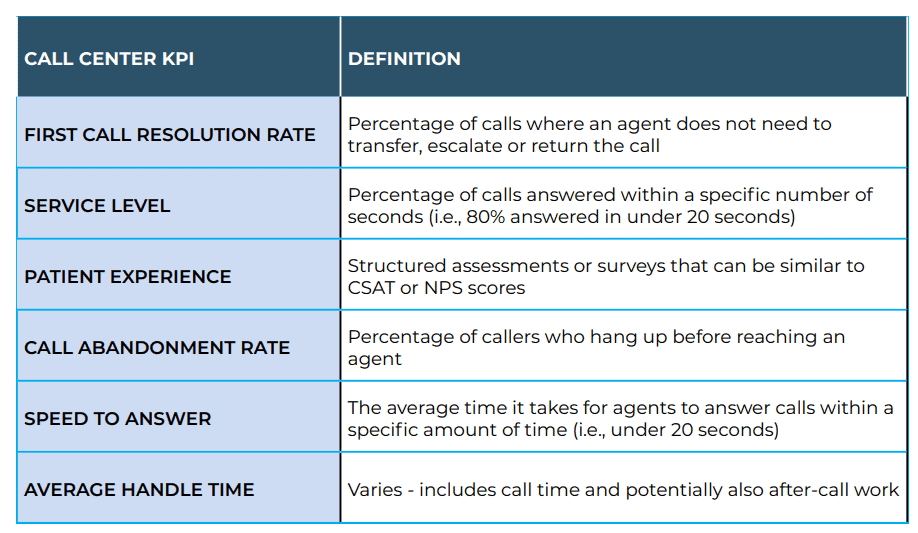
Contact center call volume may decrease as part of an overall CRM strategy that enables omnichannel communications, robust selfservice tools, and effective outreach campaigns. Whatever incoming calls come are essential and urgent. This would be a highly desirable result for the healthcare organization and its patients, and a good strategy can make this a closer and more probable outcome.
A framework to get started
Contact center transformation activities can be high-value early use cases for CRM platforms, tools, and processes. Developing a strategy and framework that will put tools in front of contact center agents that give them the ability to provide next-level service benefits everyone in the value chain and fits well with many strategic plans. The new healthcare-specific CRM platforms like Salesforce health cloud, Cerner’s HealtheCRM (in partnership with Salesforce), and Epic Cheers will offer more functionality, better access to and integration with clinical data, and a highly personalized and seamless experience.
Organizations can start with a three-part framework:
CRM Strategy and Roadmap
Evaluate the current CRM strategy and roadmap with high value use cases, including contact center transformation.
Project Plan
Develop a project plan that addresses each component, standardizes workflows, and defines the ideal sequencing and timelines.
Contact Center Transformation Strategy
Start the transformation project with a careful impact assessment of the current state, documentation of the desired state, and identification of gaps and opportunities in
- technologies
- integrations
- staffing
- internal capabilities
- physical space
- workflows
- readiness
- change management
- governance
- reporting
- training
When planned and executed well, CRM in the contact center can provide solid business results and return on investment. It does require knowledge and sufficient resources to complete the foundational work that ultimately leads to early and longterm success.
For more information, write to us at info@damoconsulting.net
We invite you to visit www.damoconsulting.net
For additional content on digital
strategy, case studies of our work,
and ongoing research, subscribe to our newsletter and our highly rated podcast,
The Big Unlock.
Recently, health systems have started sending wellness reminders for making lifestyle changes, scheduling appointments for preventive health checkups to manage care gaps, sending medication reminders and prescription refills, thereby introducing clinical areas of care. There is a considerable change in the approach to outreach from being merely reactive and providing “sick care” services to offering more proactive campaigns and touchpoints.
This white paper presents:
- How CRM can enhance patient engagement and boost patient flow for care management, preventive care, and wellness initiatives in clinical settings.
- A framework on how to get started with your contact center transformation using CRM.
- KPIs for measuring success with contact center transformation and business return on investment.

